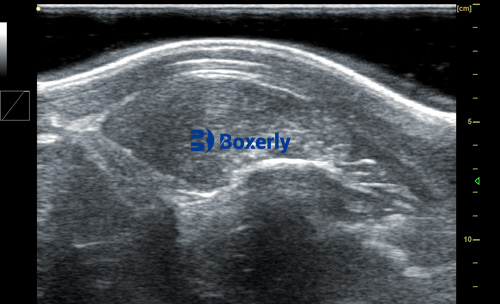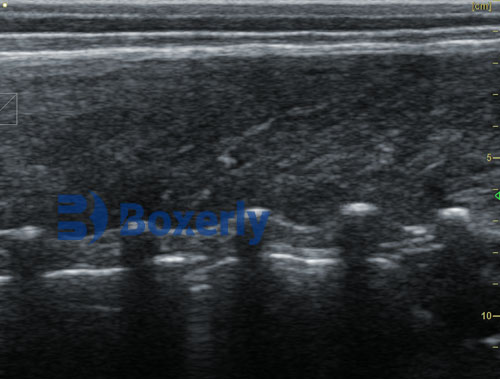As modern swine production strives for increased efficiency and sustainability, understanding the physiological factors influencing sow fertility is critical. One such factor that has gained considerable attention is backfat thickness. Ветеринарное УЗИ technology has emerged as a reliable, non-invasive tool to measure backfat thickness, providing valuable data for managing reproductive performance in sows. В этой статье, we explore how veterinary ultrasound is used to investigate the correlations between backfat thickness and sow fertility, drawing from international research and farm-level experiences to highlight its practical benefits.

Understanding Backfat Thickness and Its Role in Sow Fertility
Backfat thickness refers to the layer of subcutaneous fat covering the ribs and loin area of a sow. It serves as an indicator of the sow’s body condition and energy reserves. Maintaining an optimal backfat thickness is essential for reproductive success because it reflects the balance between energy intake and expenditure, both of which influence ovulation rates, conception, and litter size.
Sows with excessively thin backfat tend to have reduced fertility due to insufficient energy stores, which can impair ovarian function and delay return to estrus. Conversely, sows with too much backfat may also face reproductive challenges, including farrowing difficulties and increased stillbirth rates.
Internationally, researchers and veterinarians have emphasized that backfat thickness should neither be too low nor too high. The ideal range varies slightly depending on breed, nutrition, and management systems, but it generally falls between 16 Кому 22 mm during breeding and gestation periods.
Veterinary Ultrasound as a Tool for Measuring Backfat Thickness
Traditional methods of assessing sow body condition, such as visual appraisal or manual palpation, are subjective and often inaccurate. Veterinary ultrasound offers an objective, precise way to measure backfat thickness and muscle depth in live animals, enabling better management decisions.
Using B-mode ultrasound probes placed on specific anatomical sites—typically at the last rib or the 10th rib location—veterinarians can obtain real-time images showing layers of skin, fat, muscle, and bone. The backfat layer is clearly distinguishable on the ultrasound image, allowing accurate measurement in millimeters.
Ultrasound devices designed for farm use are portable, durable, and provide immediate feedback without harming the animal. This allows routine monitoring during key stages such as pre-breeding, gestation, and lactation.

Correlations Between Backfat Thickness and Fertility: Research Insights
Multiple studies across Europe, North America, and Asia have investigated how backfat thickness impacts sow fertility parameters like:
-
Return to Estrus Interval: Sows with moderate backfat thickness tend to have shorter intervals before returning to heat after weaning.
-
Conception Rate: Optimal backfat correlates with higher conception percentages.
-
Litter Size: Adequate fat reserves support larger total born and born alive piglets.
-
Weaning-to-Estrus Interval: Maintaining backfat during lactation is associated with better reproductive performance in subsequent cycles.
Например, a comprehensive study in Denmark involving over 2000 sows found that animals with backfat around 18-20 mm had the best combination of reproductive efficiency and longevity. Both underconditioned sows (<14 миллиметр) and overconditioned sows (>24 миллиметр) showed decreased conception rates and smaller litters.
Подобным образом, research in the United States concluded that precise backfat measurement through ultrasound helped optimize feeding programs, reducing fertility losses by ensuring sows maintained body reserves critical for embryo development and survival.

Practical Applications on the Farm
1. Sow Body Condition Monitoring
Routine ultrasound scanning of backfat allows producers to monitor sow body condition objectively. This data helps identify sows that need nutritional adjustments before breeding or during gestation to maximize fertility outcomes.
2. Nutritional Management
Ultrasound-measured backfat thickness guides feeding strategies. For instance, sows with low backfat can receive higher energy diets pre-breeding, while those with excess fat may benefit from restricted feeding to prevent metabolic issues affecting reproduction.
3. Breeding Management
By integrating backfat data, farm managers can select sows with optimal body condition for breeding, improving conception rates and piglet viability.
4. Lactation Management
Monitoring backfat during lactation helps assess energy mobilization. Excessive backfat loss during lactation negatively impacts the next reproductive cycle, so ultrasound data supports feeding adjustments to mitigate this.
Advantages of Veterinary Ultrasound in Backfat Evaluation
Veterinary ultrasound technology offers multiple advantages over traditional methods:
-
Non-invasive and Stress-free: Ultrasound causes no pain or stress, allowing repeated measurements.
-
Accurate and Quantitative: Provides precise backfat thickness values, reducing subjective error.
-
Real-time Results: Immediate feedback enables prompt management decisions.
-
Portable and Practical: Modern ultrasound devices are designed for on-farm use, with durable and waterproof features suitable for various conditions.
-
Multifunctional: Besides backfat, ultrasound can assess muscle depth and detect reproductive tract abnormalities.

Limitations and Considerations
Despite its benefits, ultrasound use requires training to interpret images correctly. Variability between operators can influence measurements, so standard protocols and calibration are recommended.
The cost of equipment and time investment for scanning multiple sows may limit usage on very large farms, but the long-term reproductive gains often justify the investment.
Future Perspectives and Technological Advances
The application of veterinary ultrasound in swine reproduction continues to evolve. Innovations such as automated image analysis, integration with farm management software, and improved probe designs are making backfat assessment more efficient and user-friendly.
Furthermore, combining backfat data with other indicators—like blood hormone levels or genetic markers—promises more precise fertility prediction models, allowing even better reproductive management.
Заключение
Veterinary ultrasound technology is an indispensable tool in modern swine production for investigating backfat thickness correlations with sow fertility. Through accurate, non-invasive measurement of body condition, ultrasound enables better nutritional and reproductive management, directly improving conception rates, litter size, and sow longevity.
By adopting ultrasound for backfat monitoring, producers worldwide can make data-driven decisions that enhance sow productivity, Благополучие животных, and overall farm profitability. As research and technology advance, the integration of ultrasound into routine herd management will become even more critical in optimizing reproductive outcomes in commercial pig farming.
References
-
Torrison, J.R., & Bazer, F.W. (2015). “Effects of Body Condition on Sow Reproduction.” Journal of Animal Science, 93(12), 5567–5576.
https://doi.org/10.2527/jas2015-9469 -
Pluske, J.R., & Verdon, M.J. (2018). Body Condition Scoring and Ultrasonography in Swine Reproduction Management.” Animal Reproduction Science, 194, 105–114.
https://doi.org/10.1016/j.anireprosci.2018.03.011 -
Kemp, B., Soede, N.M., & Jansen, J. (2017). “Ultrasound Measurement of Backfat in Sows: Relationship with Fertility.” Theriogenology, 90, 110–116.
https://doi.org/10.1016/j.theriogenology.2016.12.020 -
Farm Management Handbook (2024). Using Ultrasound to Monitor Sow Body Condition.” National Pork Board.
https://www.pork.org/resource/using-ultrasound-to-monitor-sow-body-condition/